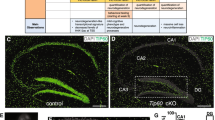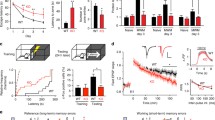Abstract
The experiments described here demonstrate that disruption of the phosphorylation of transcription factors of the HMG cAMP/Ca-independent protein kinase CK2 class may be the cause of decreased gene expression in age-related cognitive deficits. Amnesia for a conditioned passive avoidance reaction (CPAR) in aged rats (24 months old) was accompanied by decreases in the synthesis of synaptosomal proteins and transcription in nuclei isolated from cortical, hippocampal, and striatal neurons. There was a decrease in chromatin protein kinase CK2 activity and a significant decrease in the phosphorylation of HMG14 by protein kinase CK2. Selective activators of protein kinase CK2 (1-ethyl-4-carbamoyl-5-methylcarbamoylimidazole and 1-ethyl-4,5-dicarbamoylimidazole) increased HMG14 phosphorylation by protein kinase CK2, increased transcription, increased the synthesis of synaptosomal proteins, and decreased amnesia for the CPAR in aged rats. Thus, activation of the “protein kinase CK2–HMG14” system is accompanied by optimization of synaptic plasticity in aged animals. The results provide evidence for the high therapeutic potential of protein kinase CK2 activators.
Similar content being viewed by others
REFERENCES
É. Vingender, “Classification of eukaryotic transcription factors, ” Mol. Biol., 31, No. 4, 584–600 (1997).
O. G. Kulikova, L. M. Belyavtseva, B. A. Reikhardt, et al., “Involvement of RNA synthesis in the process of acquisition and retention of conditioned reflexes. (Studies using antifeins), ” Zh. Vyssh. Nerv. Deyat., 42, No. 4, 687–691 (1992).
O. G. Kulikov and B. A. Reikhardt, “HMG14 – a physiological substrate for neuron chromatin casein kinase NII, ” Biokhimiya, 62, No. 6, 1046–1054 (1996).
O. G. Kulikov and B. A. Reikhardt, “The role of autophosphorylation in controlling the activity of neuron chromatin protein kinase KK2 in rats, ” Biokhimiya, 63, No. 12, 1646–1653 (1998).
O. G. Kulikov, B. A. Reikhardt, and N. S. Sapronov, “Involvement of the genetic apparatus in the mechanisms of trace formation: the role of the calcium-regulatory system of neurons in rats, ” Zh. Vyssh. Nerv. Deyat., 47, No. 4, 708–714 (1997).
B. A. Reikhardt, O. G. Kulikov, and N. S. Sapronov, “Dynamics of lesions to the regulatory systems of the brain in age-related amnesia in rats, ” Psikhofarmakol. Biol. Narkol., 1, 38–42 (2001).
N. A. Fedorova, “High-mobility proteins: structure, location, function, ” Biokhimiya, 50, No. 5, 9–18 (1991).
P. D. Shabanov and Yu. S. Borodkin, Memory Impairments and Their Correction [in Russian], Nauka, Leningrad (1989).
C. M. Alberini, M. Chirardi, R. Metz, and E. R. Kandel, “C/EBP is an immediate-early gene required for the consolidation of long-term facilitation in Aplysia, ” Cell, 76, No. 6, 1099–1114 (1994).
D. L. Alkon and T. J. Nelson, “Specificity of molecular changes in neurons involved in memory storage, ” FASEB J., 4, No. 10, 1567–1576 (1990).
J. E. Allende and C. C. Allende, “Protein kinase CK2: an enzyme with multiple substrates and a puzzling regulation, ” FASEB J., 9, No. 3, 313–323 (1995).
P. R. Blanquet, “Neurotrophin-induced activation of casein kinase II in rat hippocampal slices, ” Neurosci., 86, 739–749 (1998).
M. Bustin, L. Trieschmann, and Y. V. Postnikov, “The HMG14/17 chromosomal protein family: architectural elements that enhance transcription from chromatin templates, ” Semin. Cell. Biol., 6, No. 4, 247–255 (1995).
T. J. Carew, “Molecular enhancement of memory formation, ” Neuron, 16, No. 1, 5–8 (1996).
C. Charriant-Marlangue and S. Otani, “Rapid activation of hippocampal casein kinase during long-term potentiation, ” Proc. Natl. Acad. Sci. USA, 88, 10232–10236 (1996).
J. Diaz-Nido, K. Mizuno, H. Nawa, and D. R. Marshak, “Regulation of protein kinase CK2 isoform expression during rat brain development, ” Cell. Mol. Biol. Res., 40, No. 5–6, 581–585 (1994).
U. Frey, S. Frey, F. Schollmeier, and M. Krug, “Influence of actinomycin D, a RNA synthesis inhibitor, on long-term potentiation in rat hippocampal neurons in vivo and in vitro, ” J. Physiol. (London), 490, No. 3, 703–711 (1996).
K. S. Haviryaji and M. C. Vemuri, “Effect of ethanol on nuclear casein kinase II activity in brain, ” Neurochem. Res., 22, No. 6, 699–704 (1997).
L. W. Jin and T. Saitoh, “Changes in protein kinases in brain aging and Alzheimer's disease. Implication for drug therapy, ” Drugs-Aging, 6, No. 2, 136–149 (1995).
M. Karin and T. Hunter, “Transcriptional control by protein phosphorylation: signal transmission from the cell surface to the nucleus, ” Current Biol., 5, 747–757 (1995).
D. N. Liverman and I. Mody, “Casein kinase-II regulates NMDA channel function of hippocampal neurons, ” Nature Neurosci., 2, No. 2, 125–132 (1995).
L. A. Pinna, “Protein kinase CK2, ” Int. J. Biochem. Cell Biol., 29, No. 4, 551–554 (1997).
S. I. S. Rattan, “Synthesis, modifications, and turnover of proteins during aging, ” Exptl. Gerontol., 31, No. 1–2, 33–47 (1996).
K. Yasojima, J. Kuret, A. J. DeMaggio, E. McGeer, and P. L. McGeer, “Casein kinase I delta mRNA in upregulated in Alzheimer's disease brain, ” Brain Res., 865, 116–200 (2000).
Author information
Authors and Affiliations
Rights and permissions
About this article
Cite this article
Reikhardt, B.A., Kulikova, O.G., Borisova, G.Y. et al. Status of the “Protein Kinase CK2–HMG14” System in Age-Related Amnesia in Rats. Neurosci Behav Physiol 33, 799–804 (2003). https://doi.org/10.1023/A:1025101516128
Issue Date:
DOI: https://doi.org/10.1023/A:1025101516128




